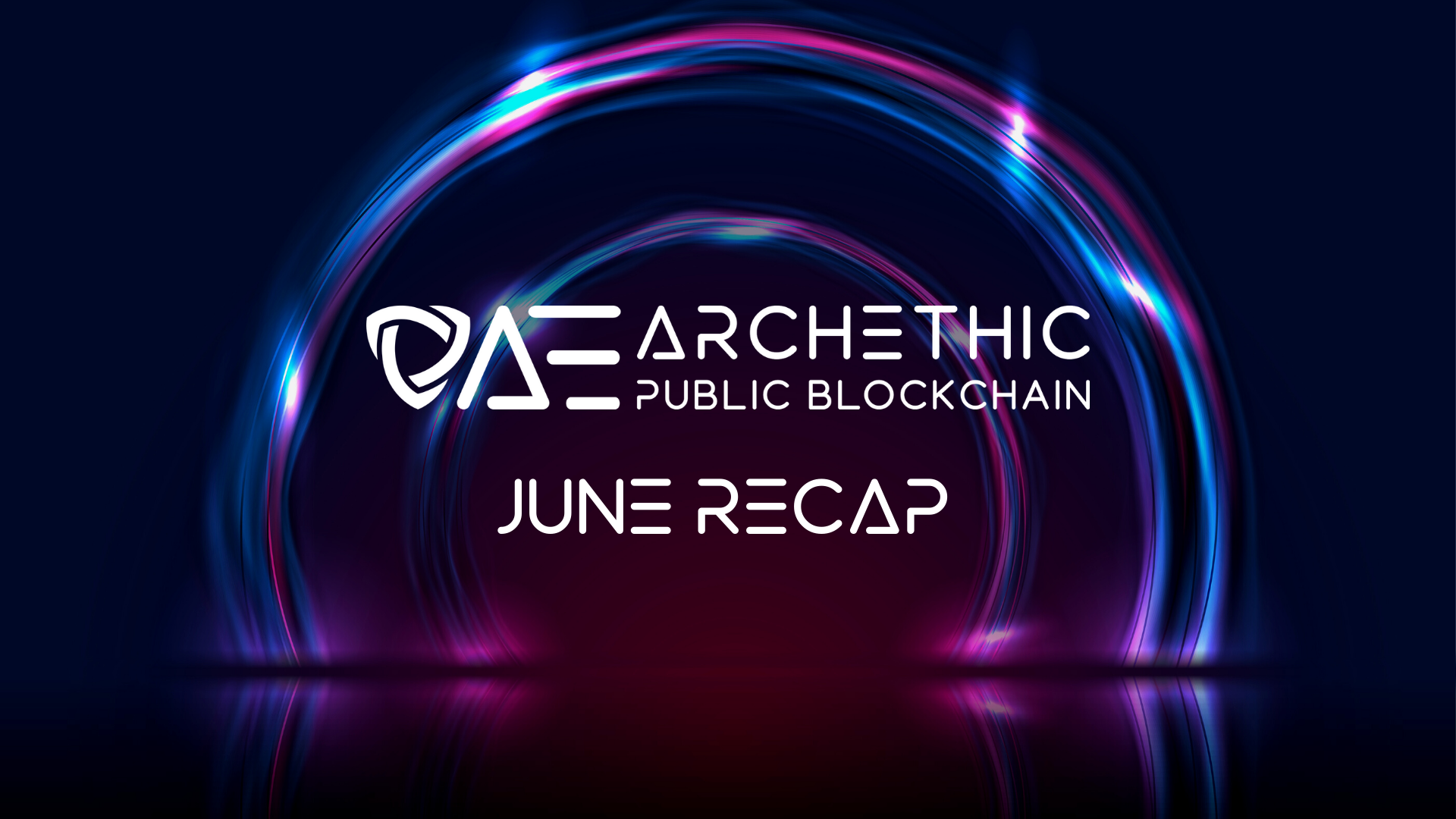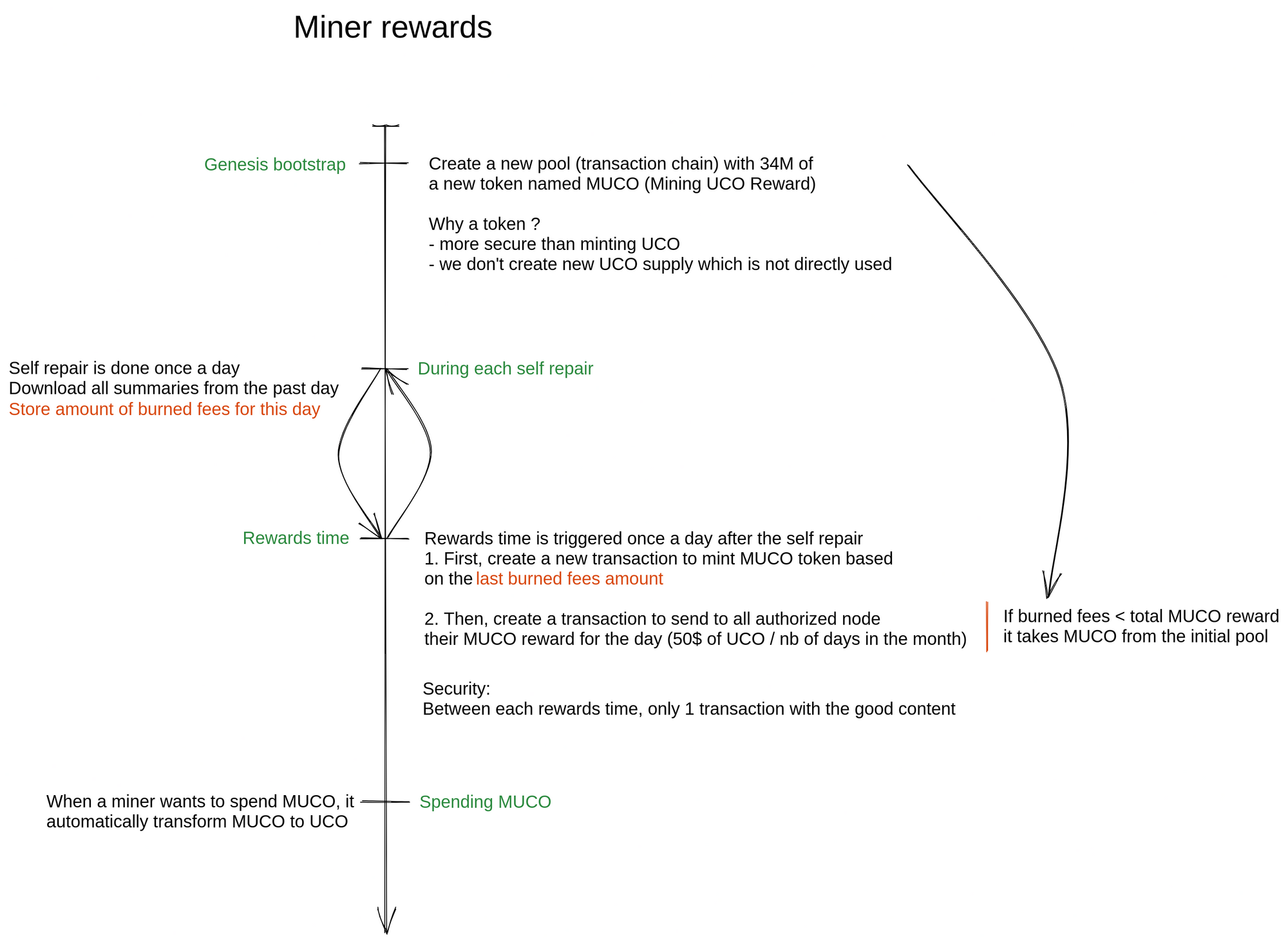AEIP, Token Standard, Miner Rewards

Archethic released a new network update end of June 2022 with some significant changes: Archethic Improvement Proposals (AEIP), Token standard, Mining rewards and other improvements and bug fixes.
Archethic Improvement Proposal (AEIP)
Archethic is an open public blockchain and is caring about transparent governance and external contributions.
Hence, we have created a way to enhance the ecosystem through Archethic Improvement Proposal (AEIP) as other blockchains are doing.
Those proposals can be technical, informational or about process of the entire workflow of proposal.
Today, two active proposals are available:
- Guidelines about the rules of the proposals
- Token standard (for fungible and non-fungible tokens)
A long with the development of the network and ecosystem, we think improvements and contributions will be done, and we encourage
our community to take part in this process.
If you are interested, please take a look at the AEIP Guidelines to see how it's works and how you can contribute
Token standard
As mentioned above, Archethic made a public proposal to announce the standardization of the tokens in the Archethic network.
Hence, we are shipped and implemented the token standard to leverage fungible and non-fungible tokens.
Four pillars define the token specification:
- Token agnostic: with a single format, any kind of tokens can be created (tokens or NFTs)
Since the beginning, Archethic's idea about tokens was to create tokens which are not linked to cryptocurrency directly but with diversity of use cases
from fungible to non-fungible. Hence, the choice to use an agnostic way to generate tokens became obvious.
Also, to ease network validations/mint policies and to help clients applications to distinguish between types of token, we have added a type field in the specification to inform which can of token will be generated.
- Unspent Transaction Output(UTXO) model
Archethic's network relies on the UTXO model, which defines a balance as the sum of the unspent inputs from other transactions.
In an account model, the balance is just a number (without correlation about the source of the income)
The advantage to leverage UTXO for tokens is the lightweight part of the transfers: no virtual machine, no smart contract.
The token exchanges is then native to the protocol and acts the same way as transferring UCOs being lightning fast.
However, we faced some challenges with this approach, during the NFT design, as we have to uniquely identify tokens for example in a collection.
The account model manages the NTF identification using an entry in a smart contract. UTXO model imposes to have transparent and clear defined inputs to uniquely identify a token.
So in order to make this possible, during the transaction validation, miners will mint tokens and create new UTXOs for all the supply you want—identified uniquely (if the token definition is a NFT collection)
- Explicit and easy definition of tokens
In order to bring adoption, we wanted to have a token definition quite simple:
- No smart contract code
- No terminal interactions
- Without inherent complexity for developers and users.
Because Archethic transactions allows free content zone in its structure, we have adopted a JSON format to be stored within the transaction.
This format is a trade-off between explicitness and developer usability.
Here an example of a NFT definition which creates a collection of 3 NFTs in a collection, where each item will have a set of unique properties.
{
"supply": 300000000, // 3 * 10*8 (being the number of decimals in the network)
"type": "non-fungible",
"properties": [
[ {"name": "image", "value": "link1"} ],
[ {"name": "image", "value": "link2"} ],
[ {"name": "image", "value": "link3"} ]
]
}
As mentioned before, this will mint of 3 UTXO well-identified and spendable right away through simple transfers.
- Cost-efficient
Because we are leveraging UTXO, the cost to mint or to send tokens is really efficient either for the network (in terms of complexity) and for the user.
The fees are drastically low for transfers (close to the minimum of $0.01 for any transactions).
On the other hand, the mint have some gradual increasing of price depending on the number of unique tokens to create. The reason is we have to create new UTXO doing more effort for the replication in terms of storage or replication.
For more details, please check our documentation.
Miner rewards
The new token economic brought few majors changes: fee burning, fee decreasing and new miner reward mechanism.
The miner rewards was the remaining part.
The following points explain roughly the design and how this is working.
- Fee burn:
New economic leverages complete burn of the transaction's fee. This means during the transaction validation, no direct nodes reward (we wrote a previous post before explaining the reason) for performances reason. But the reward will still happen just later. - Dynamic Miner reward pool:
The goal of this wallet/pool is to achieve a self-sustenance. This pool ensures the payment of each miner. At beginning 33.4M are credited to this wallet.
The main change we brought is instead of using UCO we are using a specific token - MUCO (for Mining UCO).
The reason of this choice is to avoid: hot wallets (security issue), avoid unnecessary circulating supply and better a control of the remaining funds (instead of pure infinite minting).
Finally, the network will convert MUCO to UCO once it is spent. This action will create value and supply (at this unique point).
The recipient on the other side will receive UCOs as usual. - MUCO Minting: To understand the MUCO minting, we have to review two main components:
BeaconChain
this is a layer on top of the Archethic sharded network to coordinate and maintain a view of the network. Hence, we have added into it the mention of the fee for all the transactions. So, we are able to know how many transaction fees were burnt during the day.
Self-Repair
This is an existing mechanism which help shards (network partitions) to synchronize transaction (thanks to the BeaconChain). We have added the retrieval of the fee for a day, making this number available for any nodes.
During this operation, nodes will mint new tokens based on the amount of fee of the day and refill the dynamic miner reward pool to reach either:
- inflation: no enough fee, hence we use the reserve pool
- equilibrium: fees cover just rewards
- deflation: fees are higher than the rewards, increasing the UCO's value
Here is the takeaway to summarize the entire flow:

Thanks !
A big thanks to the Archethic community and to all developers who came to provide inputs, thoughts, contributions helping us to making the network and applications better.
Archethic Public Blockchain
Archethic is a Layer 1 blockchain that seeks to empower people over data ownership, decentralized applications over slow internet, and cost-effective energy solutions over expensive carbon emissions.
Due to the use of a new consensus called "ARCH," its blockchain architecture is the most scalable, secure, and energy-efficient solution on the market.
With the addition of an internal oracle, time-triggers, editable content, and interpreted language, Archethic smart contracts broaden the capabilities of developers and builders!
Archethic provides an open and interoperable ecosystem for all blockchains with native integration for Defi, NFTs, and decentralized identities.
Let us work together to empower {Human; Nature; Apps} era of Web3
Archethic Foundation Non-profit in order to manage decentralized governance of the public blockchain
Do you want to learn more?
White Paper
Yellow Paper
